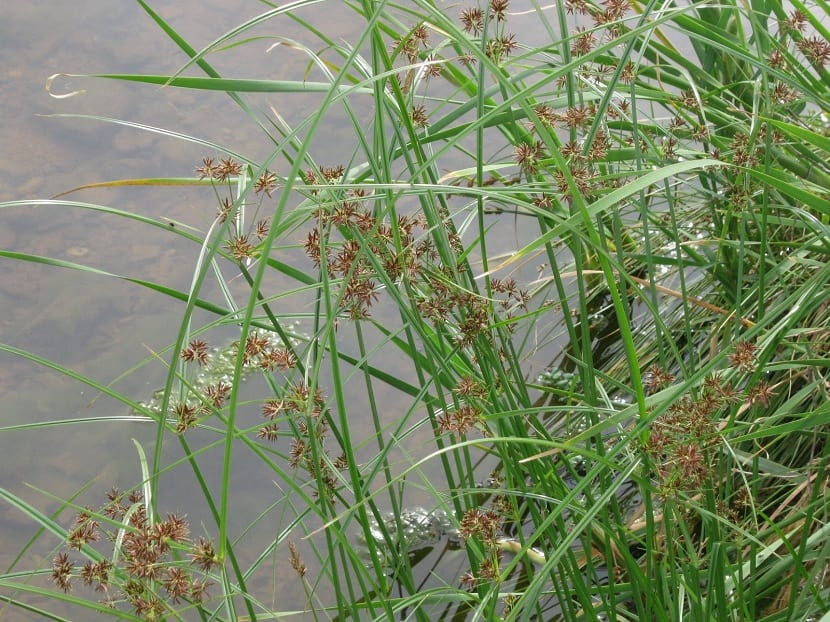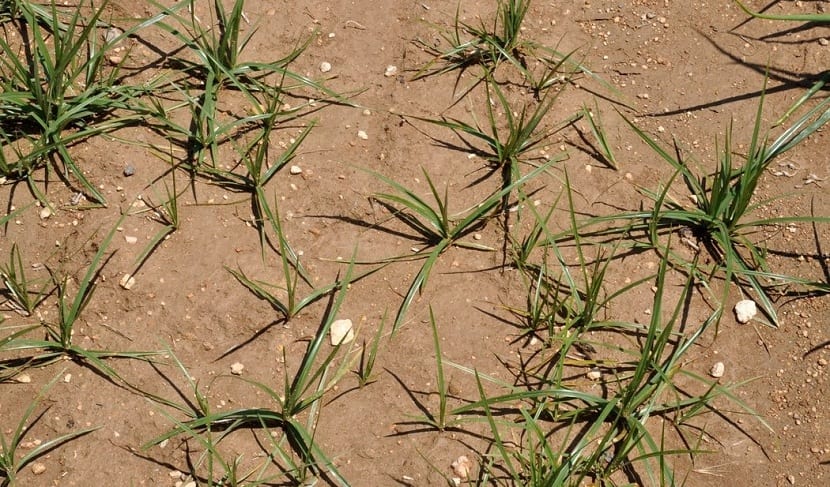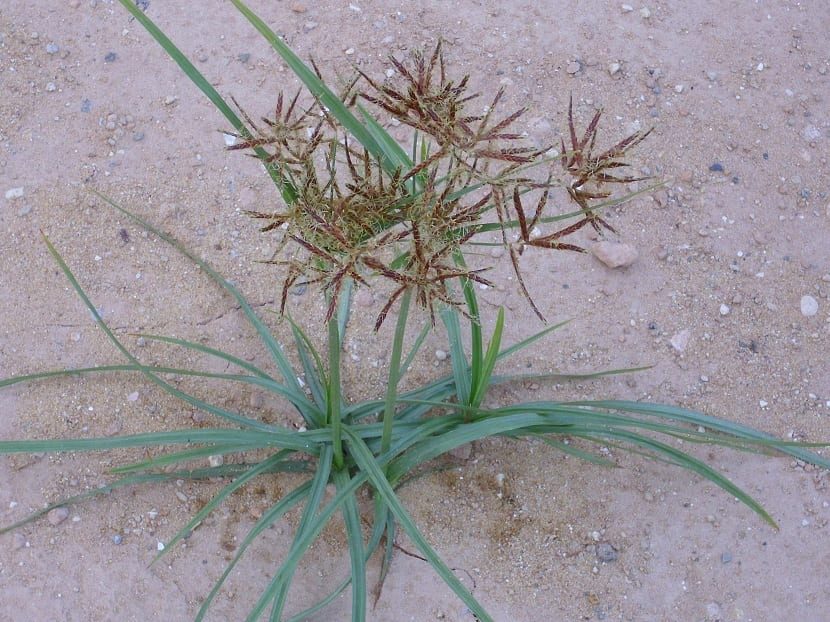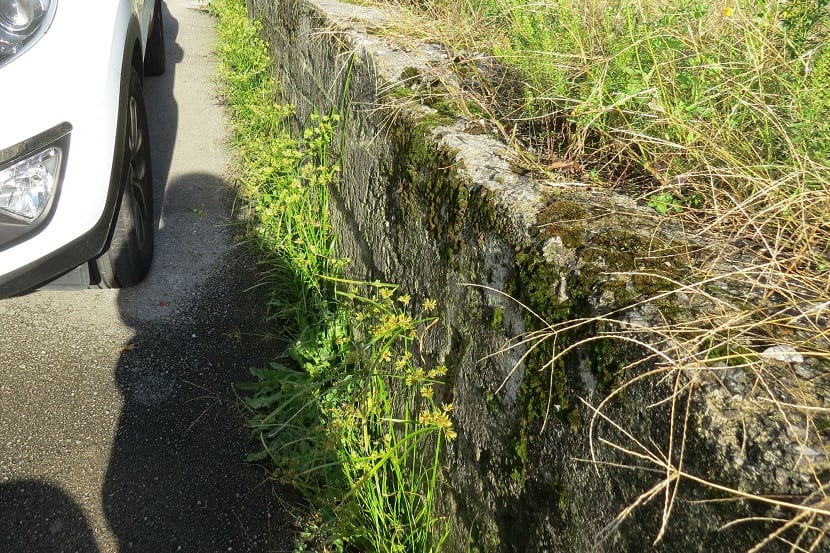
We return today with another article on botany. In this case we are going to talk about sedge. Scientific name Cypress round It is a perennial herb of the sedge family. Endowed with a robust root system and underground rhizomes, it is extremely resistant and invasive, and is considered one of the worst pests for tropical and subtropical crops. affecting more than 50 different crops in a hundred countries.
This plant is invasive and wants to be eliminated from many places. Do you want to know everything about this plant?
Sedge characteristics

It is a perennial plant that can reach heights of between 15 and 50 cm in height. In winter it loses part of its most visible structures. It does this to survive the cold, leaving only the root system and rhizomes active. These form a bulbous structure that then sprouts again the following spring, when temperatures rise and are more pleasant.
It has a trigone stem, with a basal rosette of well-developed leaves. It blooms between late spring and early autumn, producing umbel-shaped inflorescences up to 10 cm in radius with reddish-brown spicules, surmounted by several leafy bracts.
One of the unique characteristics of this plant is that its flowers are hermaphroditic. In addition, its gynoecium has three stigmas and the androecium three stamens. Its fruit is a triangular achene.
Habitat and area of distribution

Its area of distribution is quite wide: it is capable of growing in practically all the warm and tropical regions of the world. That is why it is a fairly efficient invasive plant displacing other native species.
The tubers freeze and die below 7 ° C, so this is their limitation. It reproduces mainly vegetatively, each plant producing between 60 and 120 tubers in each cycle, that will give rise to 25 to 40 new shoots.
Many of the tubers that are generated to reproduce are 15 cm deep. Not all tubers sprout in the spring, but some of them are dormant. This creates difficulties when it comes to eliminating the areas where this plant is invasive., since, when we apply herbicides, they only act on those tubers that have already sprouted, but those that are still dormant remain unharmed.
Manual extraction normally leaves the rhizomes in the ground and does not prevent their regrowth, while the soil plow chops and distributes them, thus increasing the invasion. Due to these characteristics, it is considered a fearsome pest in cereal crops, especially rice, and bananas, as well as in many other plantations.
Sedge uses
As they have a rather bitter taste, they are not usually used as food, except in cases of famine. It is used in folk medicine to treat fevers, digestive disorders, nausea, and other illnesses.
The tubers, being of high regenerative power, they are rich in phytohormones. For this reason its juice is used as a natural rooting agent in the reproduction of plants by cutting.
Sedge control methods

Sedge control methods in farmland should be aimed at eliminating its underground organs, since the control of flowering and seed production is not very important agronomically and also much easier.
To avoid the spread of sedge, it is very important that infested material does not reach the ground. with tubers through pots, seedlings, root balls, claws, etc.. It is also important to monitor ditches and banks, prevent their spread through ditches and control them as soon as the first stands appear.
Few herbicides are capable of effectively controlling this plant and that are in turn selective for the crop. In the case of dripper lines, the problem is localized, but the weed development conditions are very favorable. In addition, herbicides, because they are in very favorable root absorption conditions, applied in excess, can produce phytotoxicity to the crop.
As you can see, this plant spreads very easily and its elimination is quite complex.